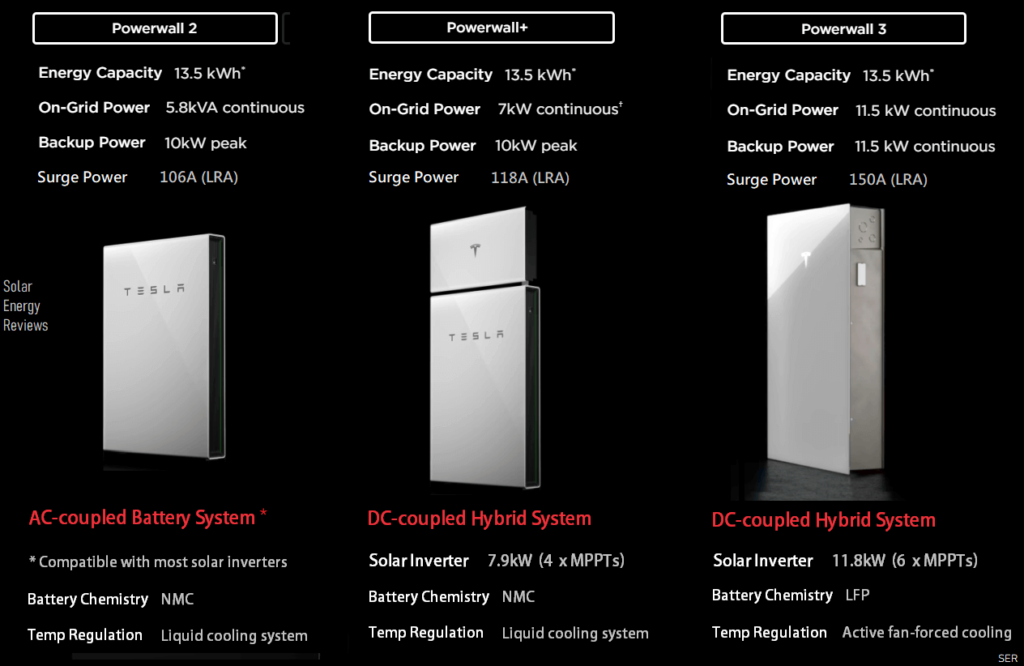Welcome to the ultimate comparison between Tesla Powerwall 3 and Powerwall 2! In this article, you will learn about the key differences and similarities between the two models, helping you decide which one is the best fit for your energy storage needs. From design upgrades to improved performance, we’ll break down everything you need to know to make an informed decision. So grab a cup of coffee, sit back, and let’s dive into the world of Tesla Powerwalls! Have you been considering investing in a Tesla Powerwall for your home’s energy storage needs, but are unsure whether to go for the latest model, the Tesla Powerwall 3, or stick with the Powerwall 2? With advancements in technology and improvements in energy storage capabilities, it can be challenging to determine which option is the best fit for your specific requirements. In this article, we will compare the Tesla Powerwall 3 and Powerwall 2 to help you make an informed decision.
Tesla Powerwall 3: What’s New?
If you’re wondering what sets the Tesla Powerwall 3 apart from its predecessor, the Powerwall 2, you’ve come to the right place. The Powerwall 3 introduces several new features and enhancements that improve efficiency, performance, and overall user experience.
One of the most significant improvements in the Powerwall 3 is its increased energy capacity. Tesla has upgraded the battery cells used in the Powerwall 3, allowing it to store more energy compared to the Powerwall 2. This higher energy density translates to longer backup power duration and increased energy savings.
Furthermore, the Powerwall 3 boasts improved software algorithms that optimize energy usage and storage, making it more efficient in managing your home’s electricity needs. These advanced algorithms enable the Powerwall 3 to seamlessly integrate with solar panels, grid power, and other energy sources, ensuring that you make the most of your renewable energy investments.
In addition to enhanced energy storage capabilities, the Tesla Powerwall 3 offers a sleeker and more compact design compared to the Powerwall 2. The new design makes installation easier and more aesthetically pleasing, ensuring that the Powerwall 3 seamlessly integrates into your home’s existing infrastructure.
Tesla Powerwall 3: Performance Comparison
When it comes to performance, the Tesla Powerwall 3 outshines the Powerwall 2 in several key areas. The Powerwall 3 delivers higher energy storage capacity, longer backup power duration, and improved efficiency, making it a more reliable and cost-effective solution for your energy storage needs.
To give you a better understanding of the performance differences between the Powerwall 3 and Powerwall 2, let’s look at some specific metrics:
| Tesla Powerwall Model | Energy Capacity (kWh) | Usable Capacity (kWh) | Power Output (kW) | Efficiency (%) |
|---|---|---|---|---|
| Powerwall 3 | 14 | 13.5 | 7 | 90% |
| Powerwall 2 | 13.5 | 13.2 | 7.6 | 88% |
As you can see from the comparison table, the Powerwall 3 offers a slightly higher energy capacity and a comparable power output to the Powerwall 2. However, the Powerwall 3 boasts a higher efficiency rating, ensuring that more of the stored energy is utilized effectively.

This image is property of www.teslarati.com.
Tesla Powerwall 2: Is It Still a Viable Option?
Despite the advancements introduced in the Tesla Powerwall 3, the Powerwall 2 remains a solid energy storage solution for homeowners looking to reduce their reliance on the grid and maximize their renewable energy investments. While it may not offer the latest features and improvements found in the Powerwall 3, the Powerwall 2 still delivers reliable performance and significant energy savings.
The Powerwall 2 features a robust design and proven track record of performance, making it a trusted choice for many homeowners. With its high energy density and efficient operation, the Powerwall 2 can effectively store excess energy generated by solar panels or grid power for later use, helping you reduce your electricity bills and achieve greater energy independence.
Tesla Powerwall 2: Value for Money
If you’re contemplating whether the Powerwall 2 is still a cost-effective option compared to the Powerwall 3, it’s essential to consider the overall value that each model provides. While the Powerwall 3 offers some notable enhancements over its predecessor, such as increased energy capacity and improved efficiency, the Powerwall 2 remains a competitive choice for homeowners seeking reliable energy storage solutions.
When comparing the price of the Powerwall 3 and Powerwall 2, it’s essential to weigh the upfront cost against the long-term benefits and savings that each model offers. While the Powerwall 3 may have a higher initial investment, it could potentially provide greater energy savings and efficiency over its lifespan, making it a worthwhile investment for some homeowners.

This image is property of images.squarespace-cdn.com.
Conclusion: Choosing the Right Tesla Powerwall for You
In conclusion, both the Tesla Powerwall 3 and Powerwall 2 offer unique advantages and benefits that cater to different energy storage needs and preferences. The Powerwall 3 introduces several new features and improvements that enhance energy capacity, performance, and efficiency, making it an attractive option for homeowners looking for the latest technology and advancements in energy storage.
On the other hand, the Powerwall 2 remains a reliable and cost-effective solution for those seeking a proven energy storage system with a track record of performance and durability. With its high energy density, robust design, and efficient operation, the Powerwall 2 continues to be a popular choice among homeowners looking to maximize their renewable energy investments.
Ultimately, the choice between the Tesla Powerwall 3 and Powerwall 2 comes down to your specific requirements, budget, and preferences. Whether you opt for the latest model with advanced features or stick with the proven performance of the Powerwall 2, both options offer reliable and efficient energy storage solutions for your home.
So, which Tesla Powerwall will you choose for your energy storage needs? Share your thoughts and considerations in the comments below!

This image is property of www.notateslaapp.com.